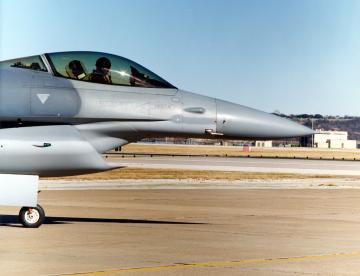Bombay Duck, are you confident that Rafales can handle newer Chinese fighter aircraft, some of which incorporate patented technology stolen from the F-35?
 Diverterless supersonic inlet
Diverterless supersonic inlet
From Wikipedia, the free encyclopedia
This article needs additional citations for verification. Please help improve this article by adding citations to reliable sources. Unsourced material may be challenged and removed. (November 2011)
Diverterless supersonic inlet
A diverterless supersonic inlet (DSI) is a type of jet engine air intake used by some modern combat aircraft to control air flow into their engines. It consists of a "bump" and a forward-swept inlet cowl, which work together to divert boundary layer airflow away from the aircraft's engine while compressing the air to slow it down from supersonic speed. The DSI can be used to replace conventional methods of controlling supersonic and boundary layer airflow, such as the intake ramp and inlet cone, which are more complex, heavy and expensive.[1]
Research into the DSI was done by Lockheed Martin in the early 1990s. The first DSI was flown on 11 December 1996, installed on a F-16 Block 30 fighter and replacing aircraft's original intake diverter. The modified F-16 demonstrated a maximum speed of Mach 2.0 and handling characteristics similar to a normal F-16. It was also shown that subsonic specific excess power was slightly improved. A DSI was later incorporated into the design of the Lockheed Martin F-35 Lightning II.[1]
The JF-17 Thunder also uses a DSI. Work on the DSI was started in 1999 ( Note the timing. -- Elmo ) with the aim of improving aircraft performance and took almost two years, during which a number of models underwent wind tunnel tests at different speed regimes. It was found that the DSI gave high performance, high total pressure recovery, low integrated distortion and good engine/intake matching.[2]
The Lockheed Martin F-35 Lightning II, JF-17 Thunder, Chengdu J-10B and Chengdu J-20 fighters all incorporate DSI.
Text below is from Lockheed's "Code One" house organ magazine Code One Magazine: JSF Diverterless Supersonic Inlet:
...
Basic research of the inlet concept continued through the mid-1990s. Traditional wind tunnel testing of small plastic inlet models built with stereolithographic techniques augmented a CFD-based development process for the DSI. Engineers made enough technical advances during this period that two US patent applications were filed, one dealing with the overall design and the second dealing with the integration process of the new technology. (Both patents were granted in 1998.) The diverterless inlet designs built and tested with this combination of CFD and small-scale wind tunnel models formed a database of inlet configurations that would subsequently prove valuable to the Lockheed Martin JSF design.
...
LM Aeronautics JSF Design Adopts DSI
The DSI concept was introduced into the JAST/JSF program as a trade study item in mid-1994. It was compared with a traditional "caret" style inlet. The trade studies involved additional CFD, testing, and weight and cost analyses. The new inlet earned its way into the JSF design after proving to be thirty percent lighter and showing lower production and maintenance costs over traditional inlets while still meeting all performance requirements.
The flight tests on the F-16 validated the aerodynamic properties of the inlet, which will be validated further on the upcoming flights of the Lockheed Martin JSF demonstrator aircraft in 2000. The flight test also proved that the analytical performance and inlet flow stability predictions from the CFD analysis matched operations in the real world. The JSF program further refined the production version of the DSI design using these CFD tools.
The DSI inlet used on the JSF has evolved through several design iterations. The shaft-driven lift fan on the STOVL JSF required the use of a bifurcated duct with one inlet on each side. The initial version was essentially the same design used on the lower surface of the F-16 rotated up onto either side of the JSF forward fuselage.
This design had a cowl that was symmetrical about the centerline of the bump. This version of the inlet appears on the X-35 demonstrator aircraft. Later CFD analysis and testing led to refinements of the design to improve its performance at high angles of attack by shifting the upper and lower cowl lips to take advantage of the side-mounted location and to improve high angle-of-attack performance. This later version has been fully tested in the wind tunnel and will be used on the EMD and on production aircraft.[/SIZE[/I]]
Last edited by Modern Elmo; 7th Feb 2012 at 03:09.